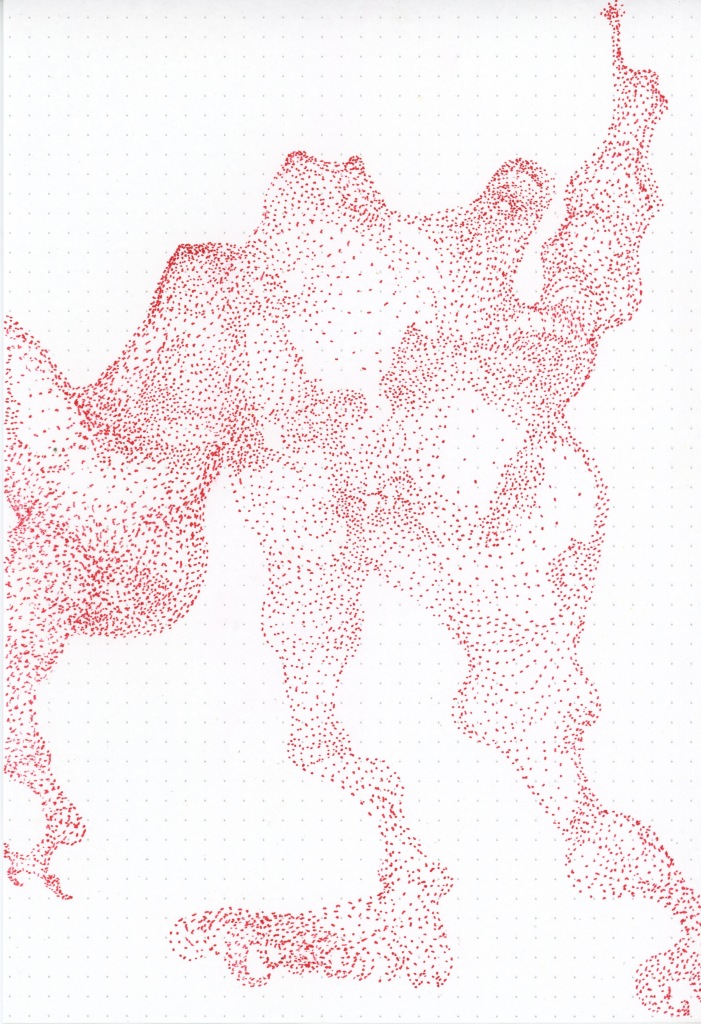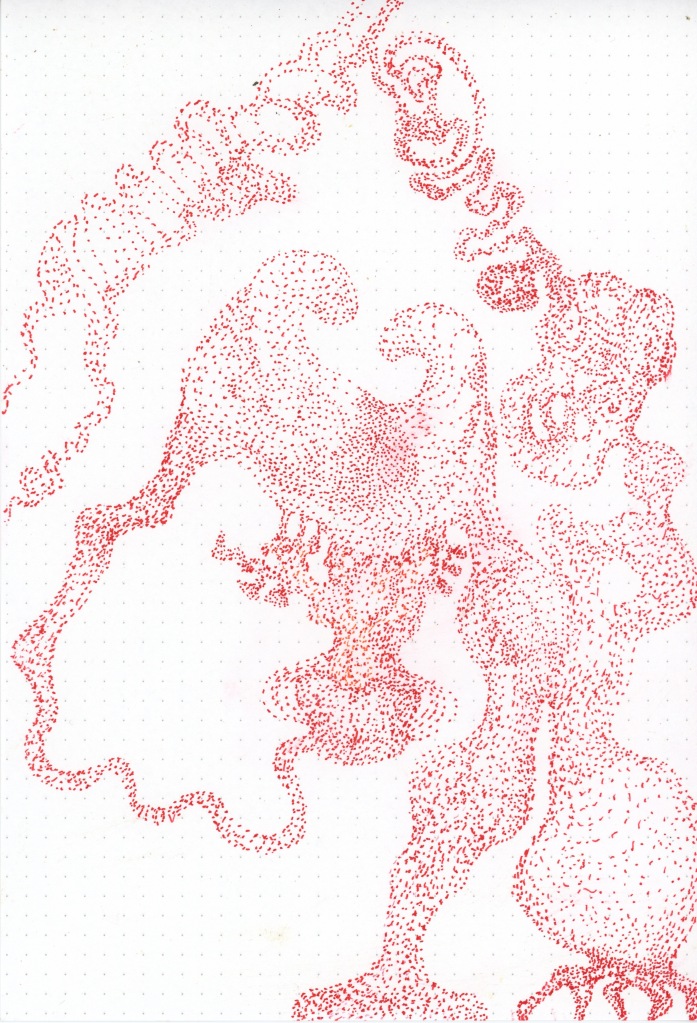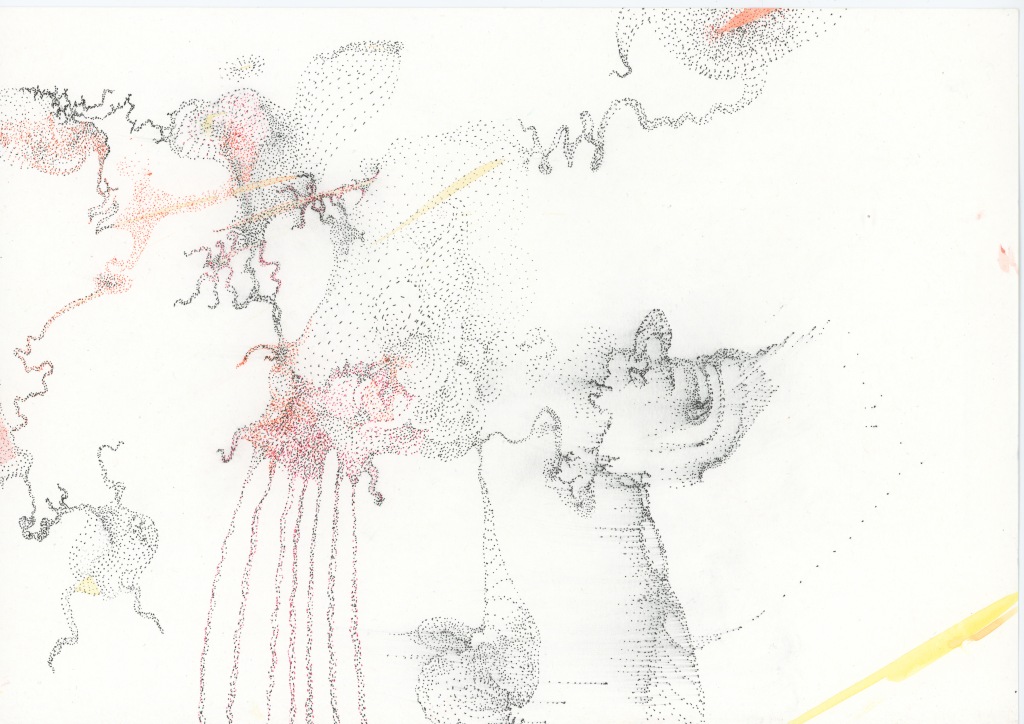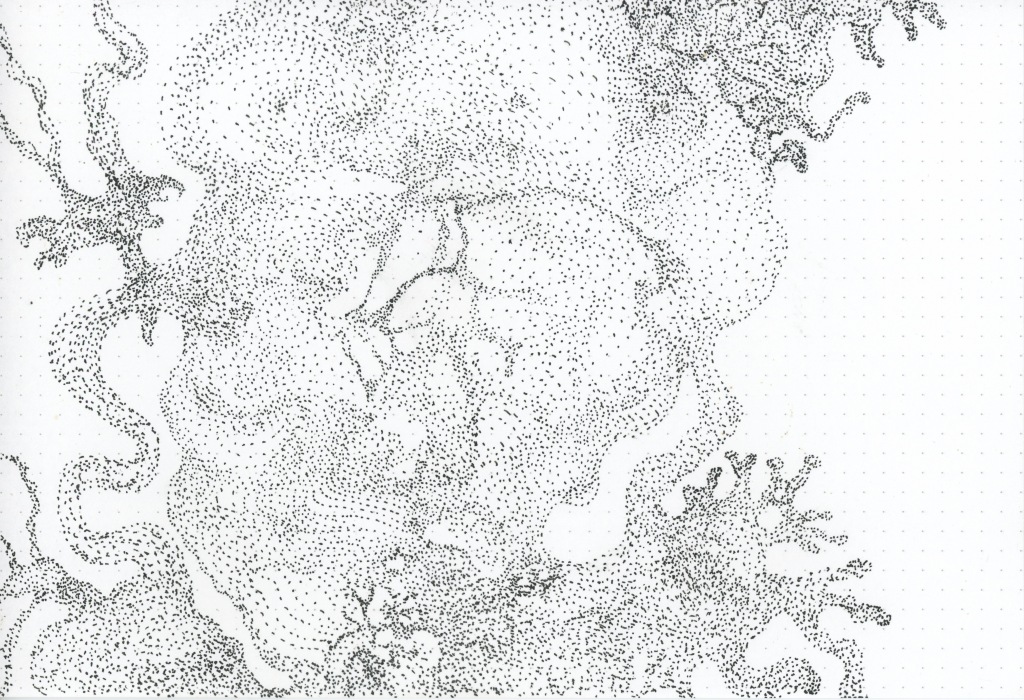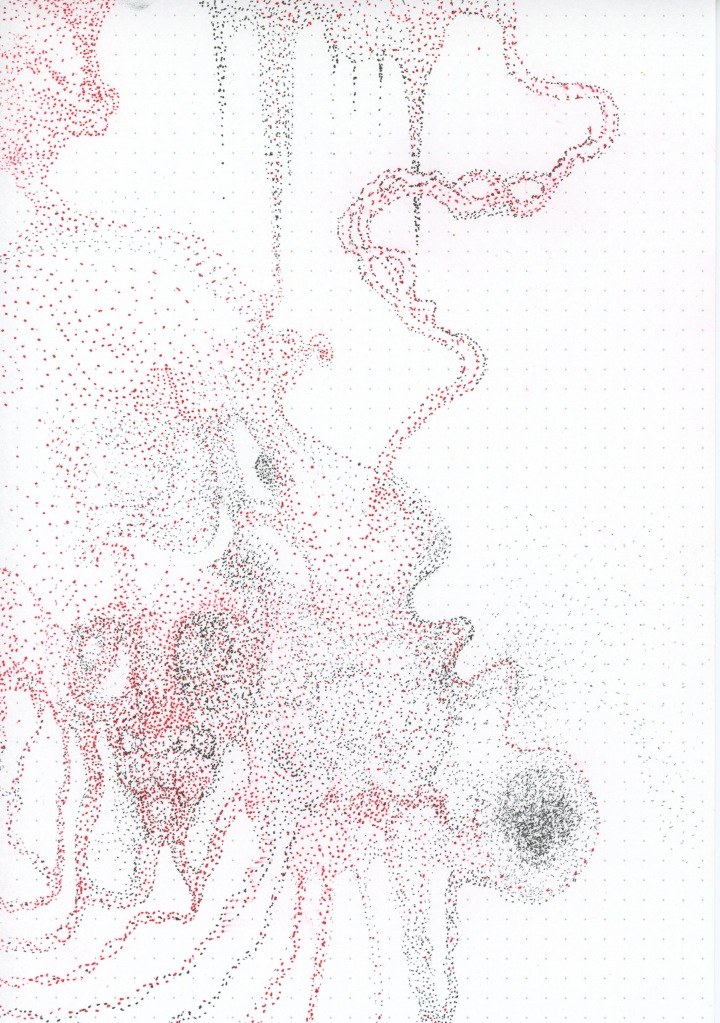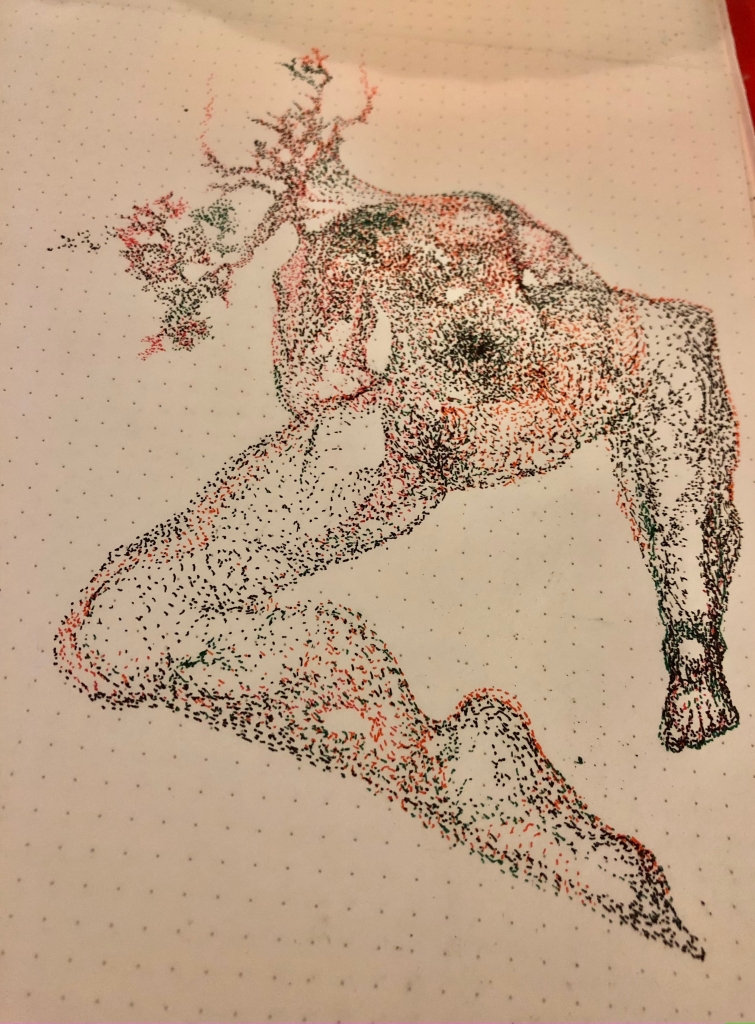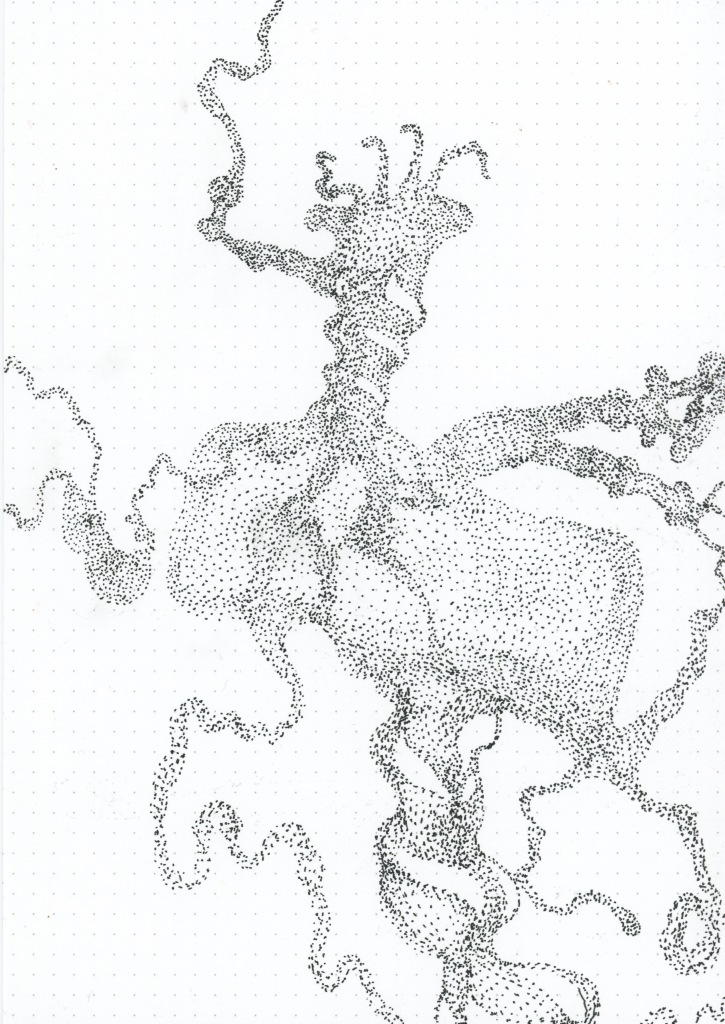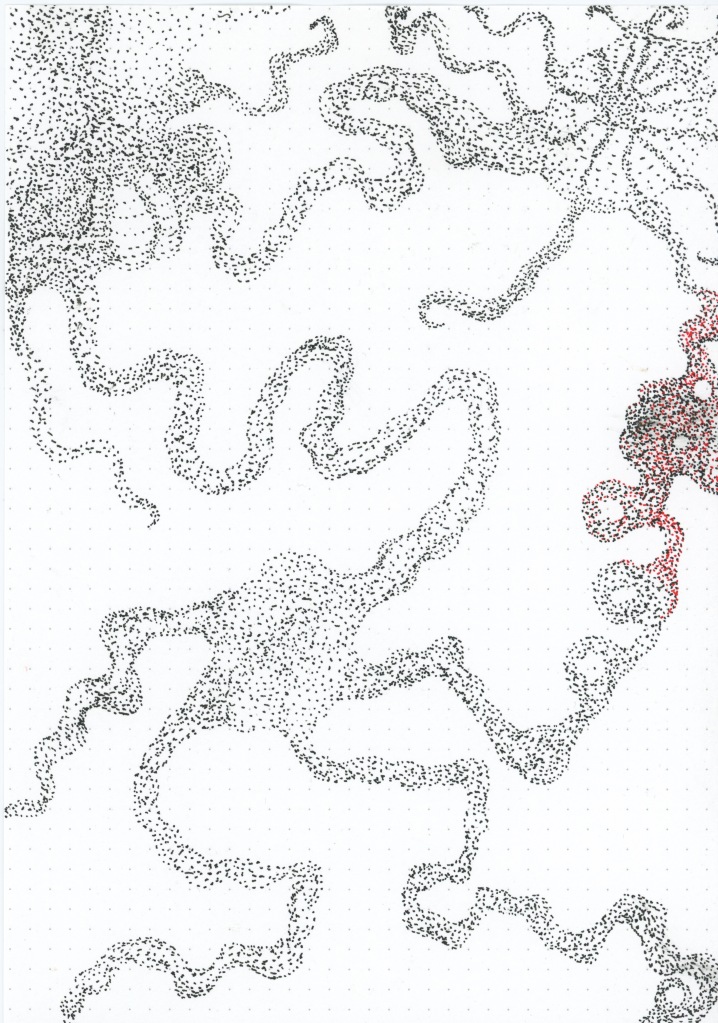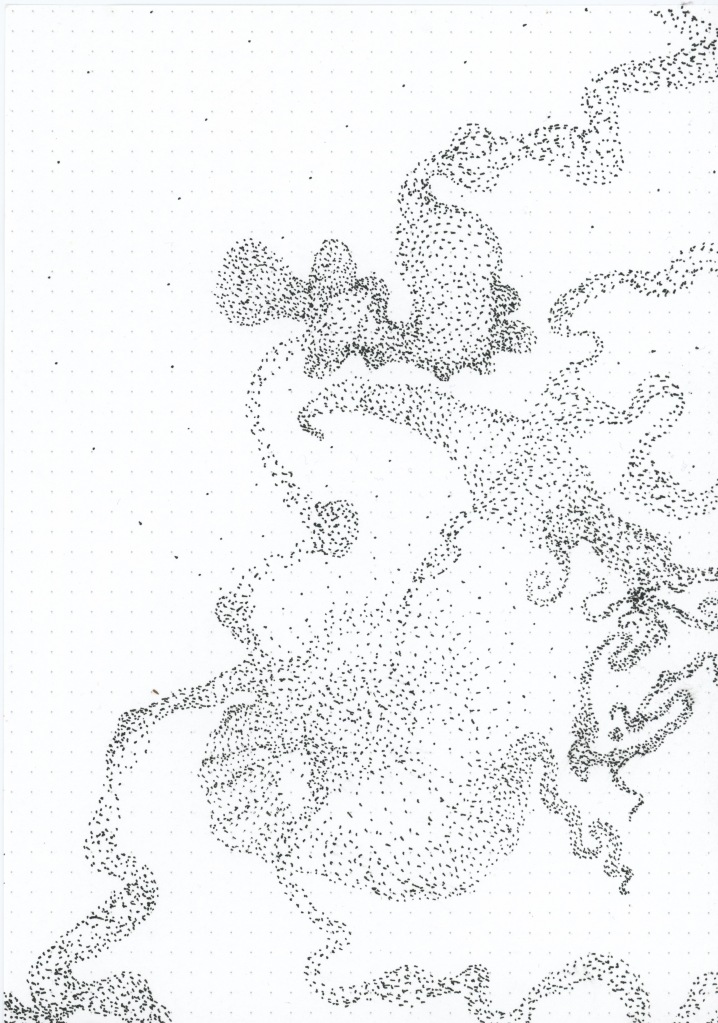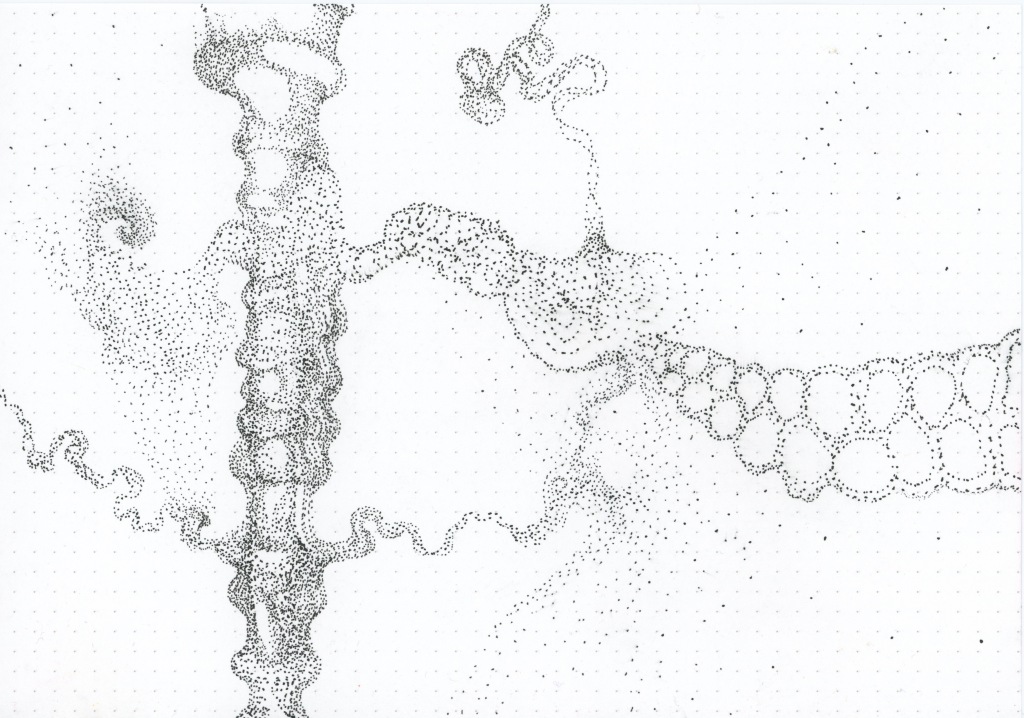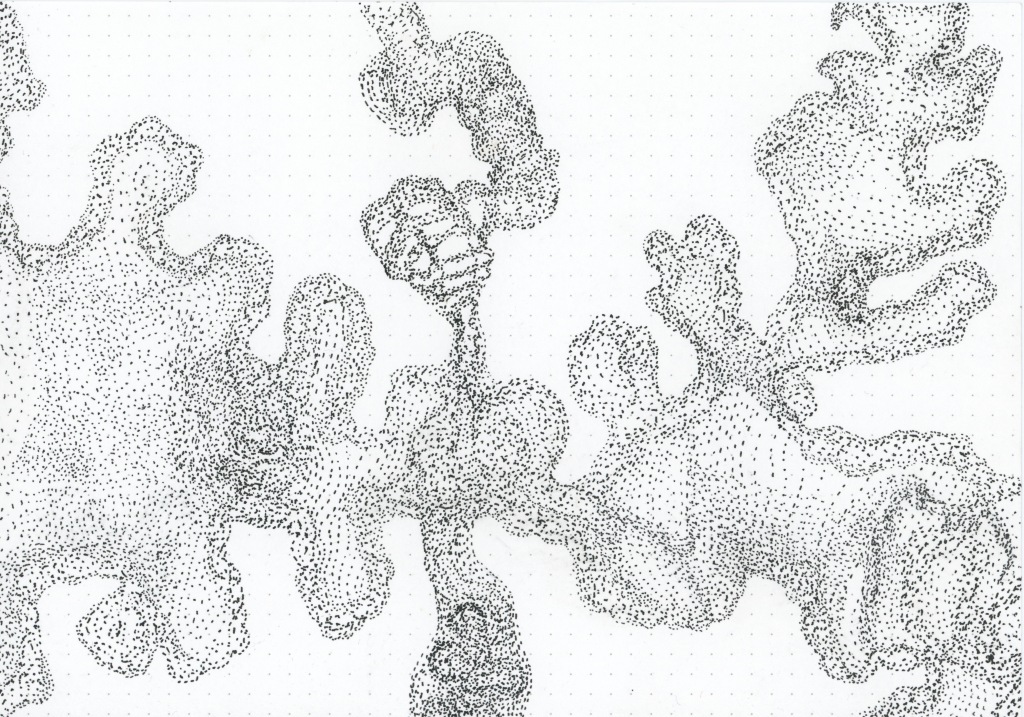Ngugi begins with a rejection of the ‘tribalist’ interpretation of African social, economic, and political life. It is as always a struggle as least partly for and about interpretation. Whose interpretation of African past, present, and future is to prevail? The coloniser or the colonised? This dialectic, and all the micro-dialectics of total liberation that will have followed from it, is at the heart of Ngugi’s concerns in this book. The Master-Slave Dialectic in an African Decolonising ontology. Decolonising the Mind is then a reflection that one might say orientates itself through this dialectic of European coloniser and African colonised, after the ‘post-independence betrayal of hope’ (21).
Recall how Deleuze in Difference and Repetition implicates the dialectic in the becomings ontological of (Western) thought—the dialectic is only the beginning of thought becoming processual.
Yet here it is, in Ngugi: a master-slave dialectic in a decolonising ontology: the ‘master armed with the bible and the sword’ (3) confronts the Other. Already we see that Ngugi has broken with both Marx and Hegel, his insistence that a kind of coalition between peasants and workers (on the terrain of both political organising and cultural expression) is necessary for national liberation and a critical precondition for an authentic decolonisation to take hold in an underdeveloped national context is not exactly Marxist as much as it resonates with the positions of the author of the Wretched of the Earth and Black Skins White Masks, Franz Fanon. And beyond Hegel because Ngugi is a materialist. Famously, Fanon had argued in The Wretched of the Earth, for a kind of indigenisation of Marx in the ‘third world’ context. Ngugi knew Fanon’s work and was working with a conscious conversation with the Fanonian legacy of revolutionary and radical resistance to the neo-colonisation of already indebted, proto-financialised, and extractivist African nation-states.
We must cut straight to the chase here: We are arguing that Ngugi’s ‘mind’ is an eco-system (or radical ontology) of language, culture, material flows, play, performativity, critique, democracy, resistance, and solidarity. This is his decolonised mind: an emancipated non-dualistic mind-body-ecosystem that has overthrown white supremacy and achieved an authentically African and creative affirmation of democratic freedom. There are also clear indications that for Ngugi the great minds of any tradition either Western or African are masculine . . . What attention does the intersecting problems of gender and sexuality in Decolonising the Mind demand from our embodied practices of attending otherwise?
We will not yet define this method of attending otherwise; we note in passing that it’s multiplicity as concept and process becomes in academic practice in relation to what Michael Burawoy calls the extended case method and to what Deleuze calls the problem of the objective illusions of thought, a covering over of process by product, a kind of fallacy of misplaced concreteness. To attend is then in the first instance, a processual attunement to the multiplicious movements of matter and memory repeating, cascading and transforming one’s eco-systems. Indefinite and mutating forms of attention are produced through series of cascades of symmetry breaking events everyday and in each moment; in attempting an unlearning as decolonising of the trauma of these historical events (counter memories of slavery, desubjugated knowledges of Black social death, colonisation, indigenous dispossession, internment, genocide, rape) I discern the operations of a multiplicity of powers, capitalist exploitation, cultural domination, fascisms, and each the domain of necropolitical struggles to colonise ecologies of attention. To pacify and neutralise history. This is our domain of struggle, and our initial tactical aim is to diagram the potentialization of these overlapping fields of struggle. What does this image of thought—attention as a cascade of symmetry-breaking events (multiplicities), which as multiplicities are remembered by the subject as (more or less) discrete and (more or less) vivid memory-images, somewhat static, and always (more or less) reductive—what does this image of thought attending, attention attending. Who is writing the algorithm of these stochastic processes today? The algorithms are writing our history. This is less a lament than a proposition for a multiplicity of counter-histories.
How does Ngugi define the national heritage in an African decolonial context? It is first of all a resistant tradition (2), the resistance embodied in a coalition of the (advanced segments of [?]) the peasantry and the proletariat, patriotic students, intellectuals (academic and non-academic), soldiers, and progressive elements of the petty middle class (2). This is the broad-based, and seemingly democratic coalition in Ngugi’s utopic but also materialist vision of a solidary postcolonial and emancipated Kenya.
The people’s language is part of the national heritage. At a particular moment in the struggle for an authentic decolonisation of Kenya, Ngugi chooses to write in his “mother’s tongue,” Gikuyu.
There is a whole ecosystem implied in this language, according to Ngugi. Vivid memories (9) of the orature of living Gikuyu, co-operation as the ultimate good in a community was a constant theme, writes Ngugi. And there were good and bad story-tellers; those who could make an oft repeated story more alive and dramatic (10); those who grew up speaking Gikuyu learnt to value words for their meaning and nuances: “Language was not a mere string of words. It has a suggestive power well beyond the immediate and lexical meaning” (11). And all the languages that have different dominant and minor inflexions in the different contexts in which they unfold in life, between village and the city, all the languages were one. We can question a certain romanticism in the oneness or this unity, but immediately we realise that for Ngugi this oneness is constituted in the struggle for total emancipation from racial capitalism and white hetero-patriarchy. The policing of Gikuyu, the punishing of those who spoke it, brought out the economy of betrayal in the ambiguous agency of “the traitor to one’s immediate community” (11).
The colonial system of education in addition to its apartheid racial demarcation had the structure of a pyramid (12). In this social ladder, in this pyramid of white supremacy, “English was the official vehicle and the magic formula to colonial elitedom” (12). The discussion of the nature of language, its dual character: means of communication and carrirer of culture. As communication, language can help one to access and stylise real life: the relations that people enter into with one another in the labour process (the naturalisation of the division of labour in the heterosexual family). Economic production is language; the “association of the child’s sensibility is with the language of his [sic] experience of life” (14).
Language is culture. Culture is a historical product which it in turn reflects. Culture as an image-forming agent in the mind of a child. Our capacity to confron the world creatively is dependent on how those images correspond or not to that reality, how they distort or clarify the reality of our struggles. Language as culture is thus mediating between me and my own self; between my own self and other selves; between me and nature. Language is mediating in my very being (15. The clear statement of what is at stake in the decolonisation of the mind: 15-16.
The aim of colonialism was to control people’s wealth, and to control the entire realm of the language of real life. Imperialism’s “most important area of domination was the mental universe of the colonised, the control, through culture, of how people perceived themselves and their relationship to the world. Economic and political control can never be complete or effective without mental control. To control a people’s culture is to control their tools of self-definition in relationship to others” (16). Under colonialism, in which Europe and its history and culture was central, learning for a colonial child becomes a “cerebral activity and not an emotionally felt experience” (17).
What do we do with statements such as: The coming inevitable revolutionary break with neo-colonialism. 27 And other sentences I don’t know quite what to do with today. There is something deterministic in the dialectic.
The definition of colonial alienation: active-passive distancing of oneself from the reality around; active-passive identification with that which is most external to one’s environment. Begins with the breakup of the Gikuyu unity of language and life; a “deliberate disassociation of the language of conceptualisation, of thinking of formal education of mental development, from the language of daily interaction in the home and in the community” (28). Ngugi proposes to decolonise the mind so ‘as to restore the Kenyan child to his environment, understand it fully so as to be in a position to change if for his collective good’ (28). Ultimately, Ngugi’s political emancipation includes a ‘democratic participation of the people in the shaping of their own lives or in discussing their own lives in languages that allow for mutural comprehension is seen as being dangerous to the good government of a country and its institutions. African languages addressing themselves to the lives of the people become the enemy of a neo-colonial state’ (30). The analysis of the varieties of dramatic expression such as songs, dance, and occasional mime (37); drama as integral to the rhythms of daily and seasonal life of the community.
Peter Brooks’s ‘empty space’ destroyed by both the missionaries and the colonial administration through the mechanism of the schools. Kamairiithu reconnected itself to the national tradition of the empty space, of language, of content and of form. 42
The spectre of the Mau Mau rebellion in Kenya. They call for a revolutionary theatre facing the consequent challenge: how to truly depict ‘the masses in the only historically correct perspective: positively, heroically and as the true makers of history (43). The proletarianization of the peasantry in a neo-colonial society. “Concretely it shows the way the … family … have to supplement their subsistence on their one and half acres with the sale of their labour . . . “ (44)
The process of continuous learning. Learning of our history. Learning of what obtains in factories. Learning of what goes on in farms and plantations. Learning our language….And learning anew the elements of form of the African Theatre. 44
What are the elements of form? Song and dance, daily speech interspersed with song, song and dance as part of the structure and movement of the actors—action and movement in time is dependent on a series of song and dances. 45
PhDs from the university of the factory and the plantation; Gorki’s university of the streets . . 56
Critique of education as a means of mystifying knowledge and hence reality 56
“The Kamiriithu practice was part of education as a process of demystifying knowledge and hence reality. People could see how the actors evolved from the time they could hardly move their legs or say their lines to a time they could talk and move about the stage as if they were born talking those lines or moving on that stage.” 57
An authentic language of African theatre, or a language of authentic African theatre 57, 58
This means concretely for Ngugi a peasant/worker-based language of African theatre, a theatre of the oppressed 59
Detained. Exiled. The condition of the exilee. The Language of African Fiction
The novel is of bourgeois origins, linked to commerce and industry 65
White supremacy and imperialist capitalism = elimination/subjugation of indigenous knowledges and cosmogonies. 66 This has been a consistent theme throughout all these seminars for the past two years: Opening thought and practices outside Europe
The discoveries that were the products of working-class labour. 68
In the hands of the peasantry and the working class, language is changing all the time, it is never at a standstill.
Verges, A Decolonial Feminism
Verges writes in the preface of a certain intersectional praxis critical to her work:
“Who cleans the world?” was where this book started, and it led to an examination of feminist struggles in the context of a violent and brutal counter-revolution. The question was triggered by a strike of the black and brown women who clean Gare du Nord train station in Paris. It was not the first strike of that kind, nor the first time that we saw the racialization and feminization of underpaid and undervalued cleaning and care work, or that the role of social reproduction in capitalism was discussed. Yet that strike generated a desire to look again at cleaning in the context of #MeToo, Black Lives Matter, the denunciation of police violence and femicides, massive feminist demonstrations and strikes especially in the Global South, but also in the context of feminist racism, imperialism, militaristic violence as a solution to social problems, and racial capitalism.
And:
This text was written from a particular position: from within the current struggle for total liberation, from a long commitment to anti-patriarchal, anti-racist, anti-capitalist and anti-imperialist struggle, and a long engagement with feminist theory and practices in the Global South. By starting with a women’s strike, I wanted to show how it remaps “social conflict in practice,” how it “politicizes the precarity of existence as a sequence that is inseparable from dispossession and extraction,” and thus constitutes a radical critique of civilizational feminism. By ending with a call for solidarity with those who clean the world, enunciated by a young Dalit, I wished to suggest that the struggle against the racialization of cleaning and caring, while imagining a decolonial politics of cleaning, caring and repairing, shows the way to construct a post-racist, post-capitalist and post-imperialist, thus posthetero- patriarchal, world. (ix)
Why, in which sense, is Verges’s starting point, her orientation of praxis, a matter of attention, of its decolonisation? I suggest Verges’s book presents a political proposition for the decolonising of attention lived in the entangled intersectionalities of everyday life. Verges affirms a revolutionary politics of total liberation that is also in some sense an overturning of Hegel’s master slave dialectic (but Hegel is not Verges’s concern, which is also important). Verges heralds a potentializing history, one that takes white civilisational feminism as simultaneously a form of racialisation (in its denials, and distribution of forms of agency), she critiques power performed and deconstructed in radical emancipatory politics today. Communicating across these two texts of radical study (Moten and Harney) From the struggle around Kamiriithu practice tied to processes of demystifying knowledge in Kenya, among speakers and experimenters of Gikuyu and postcolonial hybridised English, to the struggles for intersectional justice at Gare du Nord, to the struggles to establish a permanent revolution in forms of culture, and cultural production: this has brought us now to a certain moment in this seminar.
What is this moment? Are we not attending to it, deconstructing mindfulness discourse in a proposition we are hesitantly calling attending otherwise. Yes but how, with what quality of affect, affordance, mood, disposition, acceleration, and viscosity, what becomings have become potentialized with the convergent resonance between the queer capacities of the always already queered body and the opaque, uncanny, preindividual and collective capacities for revolutionary praxis?
Verges writes potentializing counter-memory as a decolonial feminist praxis thus:
Instead of adopting the framework of colonial narratives, which civilizational feminism so cherishes, we must relentlessly recapture the narratives of the struggles of enslaved and maroon women that reveal the existence of an anti-racist and anti-colonial feminism beginning in the sixteenth century. 63
What does she mean by relentless recapture? It suggests that these women’s histories exist even today in a state of capture, and that in their liberation all of our liberations are entangled, bound up. That is love, or solidarity: “Solidarity, unfailing solidarity, a love that is real, deep, and unconditional, but which does not tolerate violence, avoids the injunction for loyalty” (63). Verges amplifies the voices of radical women who have called for and practiced a different solidarity, one that didn’t render their own affective labours invisible, but understood work itself as the active domain for struggles for intersectional justice. The intersectional is the field of conflict.
This is a deliberate choice: that of ignoring the analyses of women who have participated in anti-colonial and anti-imperialist struggle, who have criticized sexism in nationalism and have insisted on the unavoidable intersections between economic, cultural, political, reproductive, and environmental justice. If a gap exists between the promises of struggles for independence and the postcolonial reality, it is not a matter of culture, but rather of conjecture, which the perpetuation of masculine domination was part of. Contradictions do exist, and, aware of them, decolonial feminists are constantly analyzing them. The hegemonic will of civilizational feminism cannot accept, however, that women of the Global South are able to analyze the mechanisms and ideology of masculinist and heteropatriarchal politics. In highlighting how the cruelty of white colonialist men has been more globally destructive than any other politics, decolonial feminists do not ignore the existence of systematic violence against women nor the re-emergence of oppressive structures in postcolonial states. Since 2016, the Ni Una Menos (Not One [Woman] Less) movement in Argentina has organized strikes and protests against femicide, which they describe as “one of the most extreme forms of violence against women, because it is the murder of a women by a man who considers her as his property.” They connect this struggle to the defense of Indigenous peoples’ rights to their land and against the neoliberal policies imposed by the IMF. 66-67
This is the practical politics of the intersections; it is what calls for a persistent critique in the sense Spivak means it, in the way Foucault analysed it in Discipline and Punish, in the way Deleuze understands chaosmosis in Difference and Repetition. It is what is suggested by Gramsci in his notion of Marxist critique as an inventory of an infinity of traces. Verges is within a permanent revolutionary tradition, a Black radical, and decolonial feminist tradition, in which a revolutionary resonance distributes and diagrams unities in struggle (Cabral). Verges marks out the territory of transnational emancipatory struggle in which rights denied are bodies and lives debilitated.
I am referring here to an economy that wears out racialized bodies, depletes the strength of certain individuals designated by capital and by the state as fit to be used up, to become victims of illnesses, debilitations and disabilities that, even though they may be recognized by the state after bitter struggles, are never used to challenge the very structure that causes them. Wear and tear on the body (which of course concerns men also, but I insist on the feminization of the cleaning industry) is inseparable from an economy that divides bodies between those who have a right to good health and to relax, and those whose health does not matter and who do not have the right to rest. (76)
And:
In conclusion, I leave you with the words of a text written collectively in June 2017, in which 30 of us artists and activists wrote, “We want to implement utopian thinking, intended as an uplifting energy and force, as a presence and as an invitation to emancipatory dreams, and as a gesture of rupture: to dare to think beyond that which is presented as ‘natural,’ ‘pragmatic,’ or ‘reasonable.’ We do not want to construct a utopian community but to return all of its creative force to dreams of defiance and resistance, justice and freedom, happiness and kindness, friendship and wonder.” (83)
What is Utopian thinking? How can we foment it through our practices? How can we implement it through our practice? We want to dream emancipatory dreams, we want to uplift the energy and the force of emancipatory movements, is it easy to participate in this we, or is it situated, and in what sense, situated? How does Utopia, when does Utopia become strategic? When it is confronted with Lenin’s question: What is to be done? How can collective practice move with kindness, friendship and wonder toward total liberation?
Let us turn to Hegel. Does attention work in dialectical phenomenology, and if so what problem does it pose to this thought? In the Phenomenology of Spirit, Hegel insists on the murderous Desire that constitutes the self-subject’s relation of negation to the Other.
“The simple ‘I’ is this genus or the simple universal, for which the differences are not differences only by its being the negative essence of the shaped independent moments; and self consciousness is thus certain of itself only by superseding this other that presents itself to self-consciousness as an independent life; self-consciousness is Desire. Certain of the nothingness of this other, it explicitly affirms that this nothingness is for it the truth of the other; it destroys the independent object and thereby gives itself the certainty of itself as a true certainty, a certainty which has become explicit for self-consciousness itself in an objective manner. In this satisfaction, however, experience makes it aware that the object has its own independence. Desire and the SeIf certainty obtained in its gratification, are conditioned by the object, for sense certainty comes from superseding this other: in order that this supersession can take place, there must be this other. Thus self-consciousness, by its negative relation to the object, is unable to supersede it; it is really because of that relation that it produces the object again, and the desire as well. It is in fact something other than self-consciousness that is the essence of Desire; and through this experience self-consciousness has itself realized this truth. But at the same time it is no less absolutely for itself, and it is so only by superseding the object; and it must experience its satisfaction, for it is the truth.” 109
Why is the self certain of the nothingness of the other? If it is independent of the self, doesn’t the force of this independence insist on a kind of ontological difference. Self consciousness is desire, objectivity is rooted in the death of the other-object. The other is a subject of lack: desire and certainty are mutually ramifying dynamics in the dialectic of master and slave. This is also about a certain teleology in the march of Absolute Spirit, unrelated but it makes me think of the philosopher listening for the column on the march, as Heidegger reminisces in Being and Time. In that sense it is about the propriation or realisation of truth as Absolute Knowledge.
In the sphere of Life, which is the object of Desire, negation is present either in an other, viz in Desire, or as a determinateness opposed to another indifferent form, or as the inorganic universal nature of Life. But this universal independent nature in which negation is present as absolute negation, is the genus as such, or the genus as self-consciousness. Self-consciousness achieves its satisfaction only in another self-consciousness. 176.
The notion of self-consciousness is only completed in these three moments: (a) the pure undifferentiated’!’ is its first immediate object. (b) But this immediacy is itself an absolute mediation, it is only as a supersession of the independent object, in other words, it is Desire. The satisfaction of Desire is, it is true, the reflection of self-consciousness into itself, Qr the certainty that has become truth. (c) But the truth of this certainty is really a double reflection, the duplication of self-consciousness. Consciousness has for its object one which, of its own self, posits its otherness or difference as a nothingness, and in so doing is independent. The differentiated, merely living, shape does indeed also supersede its independence in the process of Life, but it ceases with its distinctive difference to be what it is. The object of self-consciousness, however, is equally independent in this negativity of itself; and thus it is for itself a genus, a universal fluid element in the peculiarity of its own separate being; it is a living self-consciousness. 110
These are the passages leading up to the section on Independence and Dependence of Self-Consciousness: Lordship and Bondage. One might say in this part of the Phenomenology (written around the same time as the Haitian revolution and the circulation of romanticised accounts of the life and death of Toussaint Louverture, Napolean, the end of colonial slavery in the British colonies in 1807, romanticism, Captain Swing and machine breaking by displaced workers, the discussion of the master-slave dialectic comes as an example of the romantic story, a Bildungsroman of the subject-self, who struggles through the errors of sense certainty to confront the other and the other in the self, to wager one’s freedom, thus one’s life, a life authenticated through the recognition of the other, and then finally through their death or sublation. This is the Bildungsroman of negation, of Desire, and work. Yet there is a constant series of tensions at work in Hegel, between the ambiguous or opaque and the clear and distinct, between representation and that which cannot be representation, between death and the inanimate and the living reality of freedom itself, between desire and satisfaction—these are non-converging series in the sense Deleuze means when he speaks of sets of series only converging in a vague chaos beyond which all series are dissolved in a state of pure connectivity. In Independence and Dependence of Self-Consciousness: Lordship and Bondage, Hegel writes thus:
Self-consciousness is faced by another self-consciousness; it has come out of itself. This has a twofold significance: first, it has lost itself for it finds itself as an other being; secondly, in doing so it has superseded the other, for it does not see the other as an essential being, but in the other sees its own self. It must supersede this otherness of itself. This is the supersession of the first ambiguity, and is therefore itself a second ambiguity. First, it must proceed to supersede the other independent being in order thereby to become certain of itself as the essential being; secondly, in so doing it proceeds to supersede its own self, for this other is itself. This ambiguous supersession of its ambiguous otherness is equally an ambiguous return into itself. For first, through the supersession, it receives back its own self, because, by superseding its otherness, it again becomes equal to itself; but secondly, the other self-consciousness equally gives it back again to itself, for it saw itself in the other, but supersedes this being of itself in the other and thus lets the other again go free. Now this movement of self-consciousness in relation to another self-consciousness has in this way been represented as the action of one self-consciousness . . . (111)
And:
This presentation is a twofold action; action on the part of the other, and action on its own part. In so far as it is the action of the other, each seeks the death of the other. But in doing so, the second kind of action, action on its own part; is also involved; for the former involves the staking of its own life. Thus the relation of the two self-conscious individuals is such that they prove themselves and each other through a life-and-death struggle. They must engage in this struggle, for they must raise their certainty of being for themselves to truth, both in the case of the other and in their own case. And it is only through staking one’s life that freedom is won; only thus is it proved that for self-consciousness, its essential being is not [just] being, not the immediate form in which it appears, not its submergence ill the expanse of life, but rather that there is nothing present in it which could not be regarded as a vanishing moment, that it is only pure being-for-self. The individual who has not risked his life may well be recognized as a person, but he has not attained to the truth of this recognition as an independent self-consciousness. Similarly, just as each stakes his own life, so each must seek the other’s death, for it values the other no more than itself; its essential being is present to it in the form of an ‘other’, it is outside of itself and must rid itself of its self-externality. The other is an immediate consciousness entangled in a variety of relationships, and it must regard its otherness as a pure being for self or as an absolute negation. 113-14
Without invoking it as a specific problem, attention comes to the fore as a dynamic when the subject-self is confronted by an implacable other-object and wagers their life on mastering the other and extracting an acknowledgment of the self’s superior power on the way to that other’s death. This is a process through which self-consciousness comes to a dialectical consciousness of the power of its own self (Heidegger will link this to an adventure of authenticity) over the other, an other which through this process becomes part of the self. What entanglement is Hegel speaking of? What does it have to do with Karen Barad’s ecosystemic theory of entanglement?


